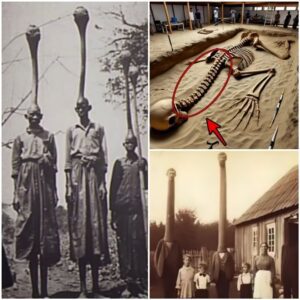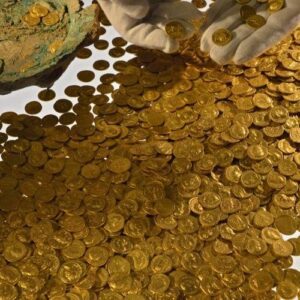It was in this manner that in 1966, the Peruvian archaeologist Rafael Larco released ‘Checá,’ a comprehensive examination of erotic ceramics originating from the Mochica culture. ‘Checá’ represents the traditional Mochik language for ‘love measurement,’ and Larco selected it to depict what he perceived as a manifestation of universal truths conveyed through sexual interactions.

This is the central theme of the permanent exhibition at the Erotic Gallery of the Larco Museum in Lima, Peru. Spanning approximately from 1250 BCE to 1300 CE, the ceramic artifacts portray the human body as a conduit for reproduction, communication with the gods, and the various facets of love and pleasure. These ceramic pieces, described as products of clay and water, molded by skilled hands, hardened through fire, and cooled by air, not only symbolize these themes but also entice erotic encounters through their tactile and artistic craftsmanship.
Explore an astonishing recent revelation in Egypt that has the potential to reshape our understanding of the world!

Commonly found among Mochica artifacts, vessels shaped like the female body were prevalent in Salinar culture, Peru, from 1250 BCE to 1 CE, and are housed in the Larco Museum in Lima, Peru. These phallic-shaped vessels were intended for the consumption of liquids during sacred ceremonies. The design required the liquid to be consumed through the ceramic pieces, as any spillage was not a matter of amusement but held significant cultural importance for the Mochicas.

Ceramic bottles resembling male genitalia, originating from the Vicus culture (1250 BCE–1 CE), Moche culture (1 CE–800 CE), and Lambayeque culture (800 CE–1300 CE) in Peru, can be observed at the Larco Museum in Lima, Peru. Captured in a photograph by the author.
The Moche civilization thrived in early Peru from around AD 100 to 700 CE, covering an area encompassing nearly a third of the country’s current length. They resided along the coastal regions, sustaining themselves through agriculture. Similar to many global cultures, they closely observed seasonal and reproductive cycles, drawing parallels with the human body and sexuality. Today, societal norms often lead to the concealment of the human body as an act of modesty or shame. However, the ancient Moche pottery reflects a deep understanding of the human body, acquired through careful study and observation, and its integration into daily activities, indicating a distinct and more open attitude towards this aspect of human life.

Sculpted clay bottles illustrating an exchange between a high-ranking couple from the Moche culture, which thrived from 1 CE to 800 CE in Peru, can be found at the Larco Museum in Lima, Peru, and were photographed by the author.
As evident in the ceramics on display in the gallery, the Moche people embraced and celebrated sexuality and eroticism, considering them an integral part of the world’s essential life forces and a source of generative power. This belief extended to Pachamama (the earth), whom they regarded as the mother of all living beings. In some myths, it was Ai Aiapaec, a hero of their civilization, who fertilized Pachamama with his semen after enduring challenges to prove her worthiness. This union of complementary forces is often referred to as Tikuy. Just as day follows night, men and women came together to initiate new life, reinforcing the profound significance of these themes.
Also, don’t miss the fascinating exploration of the 12 most substantial and costly gold nuggets ever unearthed.

Ceramics illustrating the union of Ai Aiapaec and a woman, originating from the Moche culture, dating from 1 CE to 800 CE in Peru, can be observed at the Larco Museum in Lima, Peru, and were captured in a photograph by the author.
This perspective of viewing sex as a ritual rather than a mere reproductive act is depicted in various forms. For instance, depictions of oral sex, either performed by men or women, suggest that it may have been conducted ceremonially as a tribute to Mother Earth.






